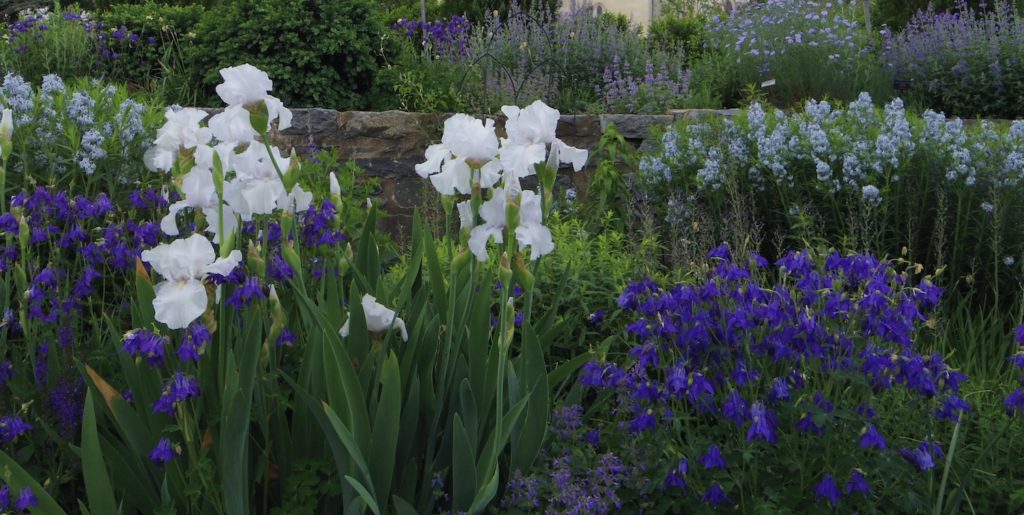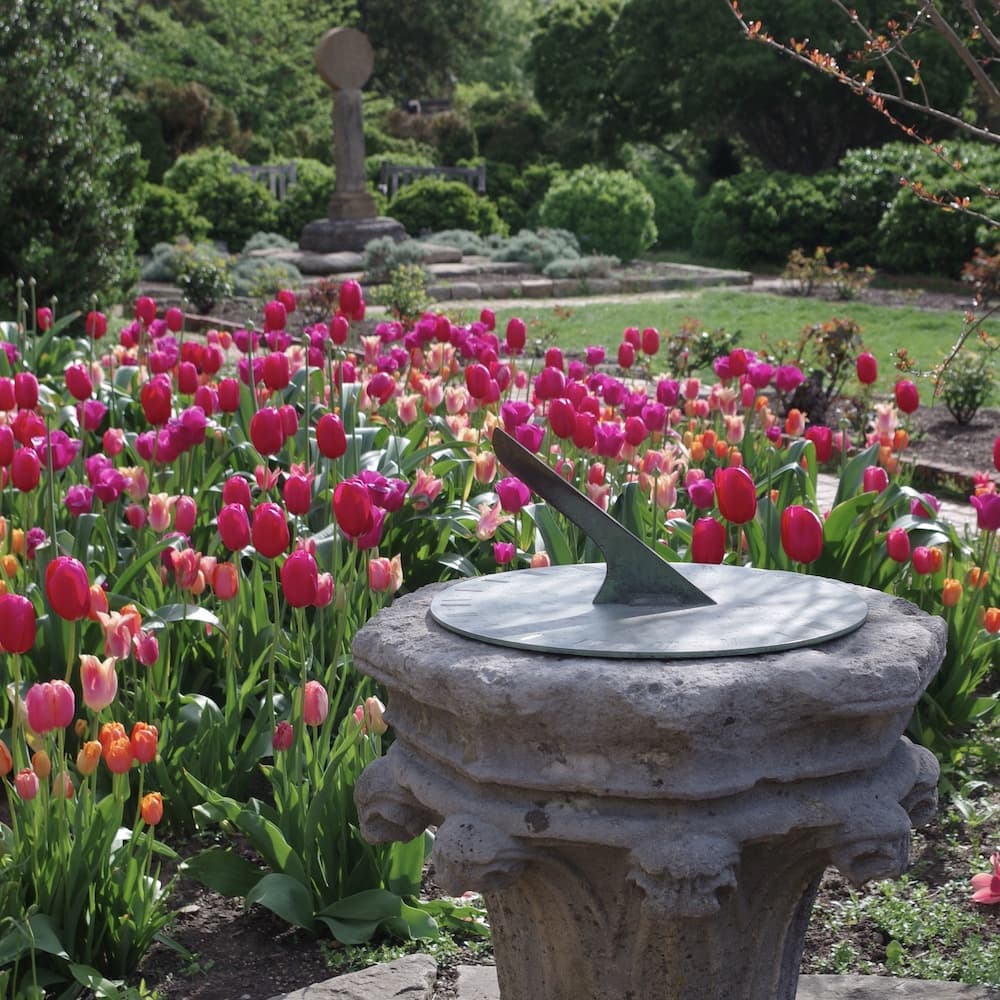December 1, 2020
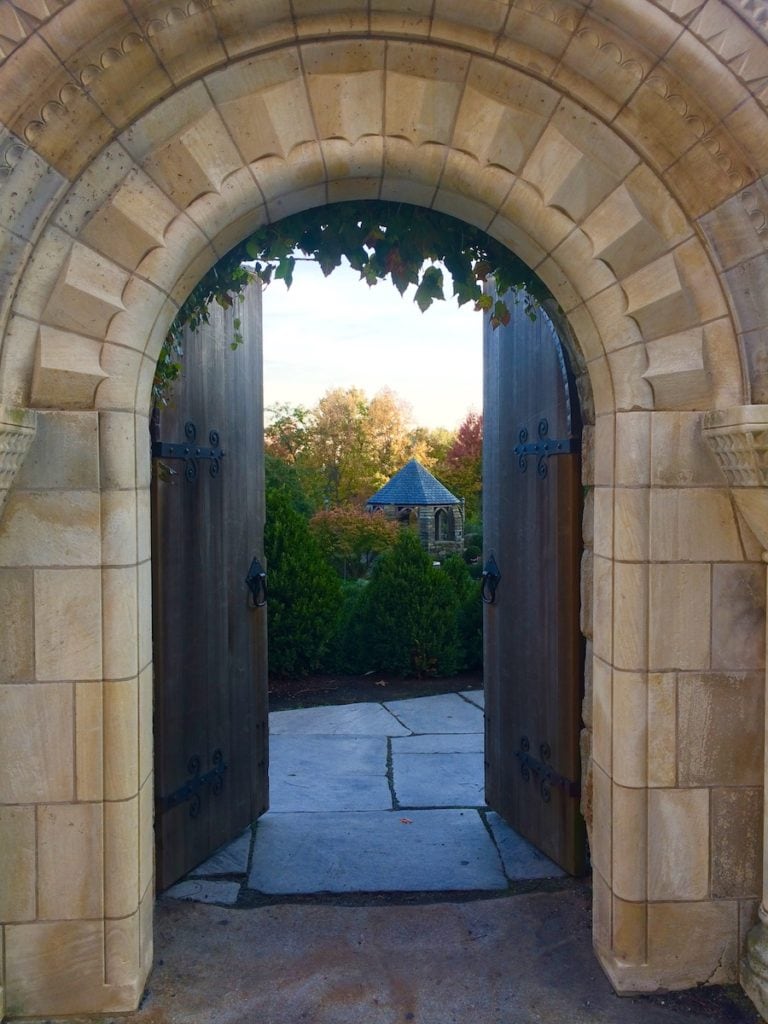
A college student working on a project in the Bishop’s Garden recently asked All Hallows Guild for information about garden practices, pest control, and maintenance. This prompted the editors to interview Ms. Adrienne Schopf, staff horticulturist for the Bishop’s Garden. Her responses reveal not only the constant work necessary to maintain this treasure, but also the environmental care evident in pest management practices.
Following are the questions put to Addie Schopf along with her responses.
How is the Bishop’s Garden maintained?
This is a tough question to answer. Every morning, when I first get up to the garden, I do a walk-around. This allows me to check areas and prioritize projects needed. I usually have a general idea of what I want to accomplish in the garden that day, and after walking around in the morning, I adjust if need be. The walk around in the morning is especially important in the summer time, as it allows to me figure out what needs to watered, either by hand watering or setting up a sprinkler.
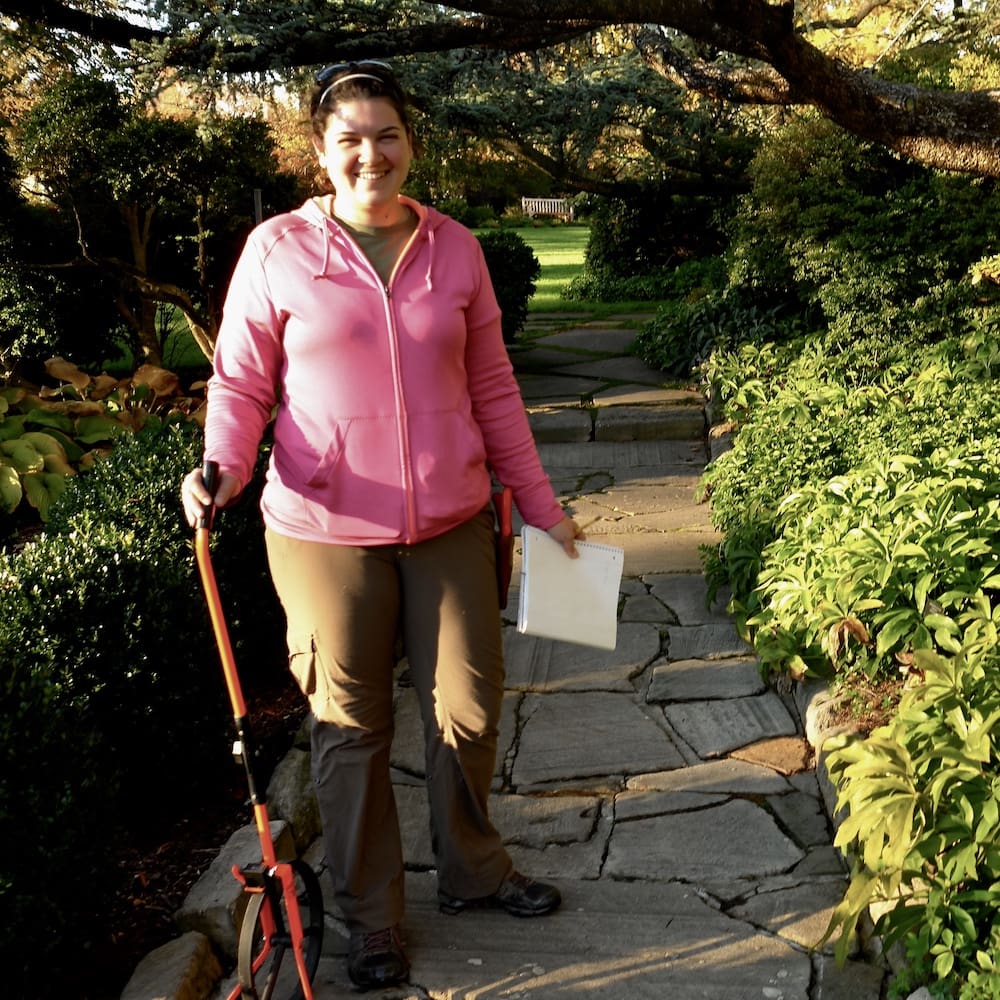
I am the only full-time staff person working in the garden. I have a group of volunteers who come in once a week from April to November, and I have 2-3 summer interns sponsored by All Hallows Guild who are full time for the weeks they are here. We also have a position called flex gardener. This gardener moves around the Cathedral close working in all the areas, so I have his help usually about once a week. If we have a big project going on, like a new garden installation, then he helps with that.
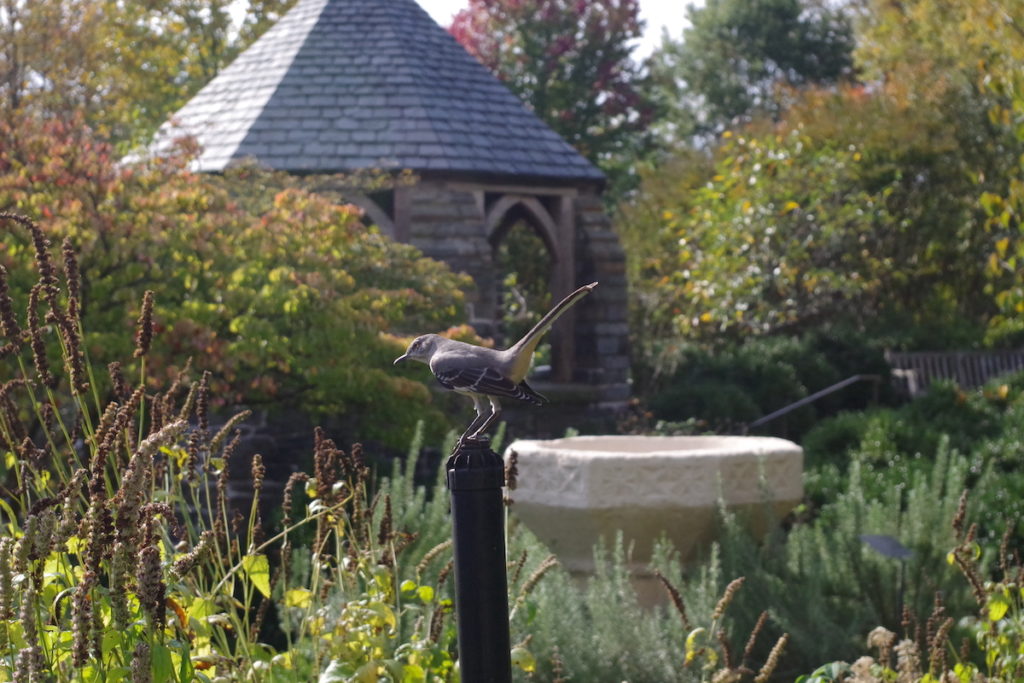
What sorts of practices are used to care for the plants and manage pests and weeds?
Weeds in the flower beds are removed by hand. In smaller areas, we use our soil knife, but for larger areas we cut out the weeds using a hoe. In pathways, we use a weed torch. We have propane canisters that we hook up to the weed torch to kill the weeds. This kills just the foliage of the plant, not the roots. The weeds do come back in a few weeks, so this job must be repeated periodically. We prefer using the weed torch for pathways instead of putting down chemicals such as Round-Up. Chemicals are only infrequently used in the garden.
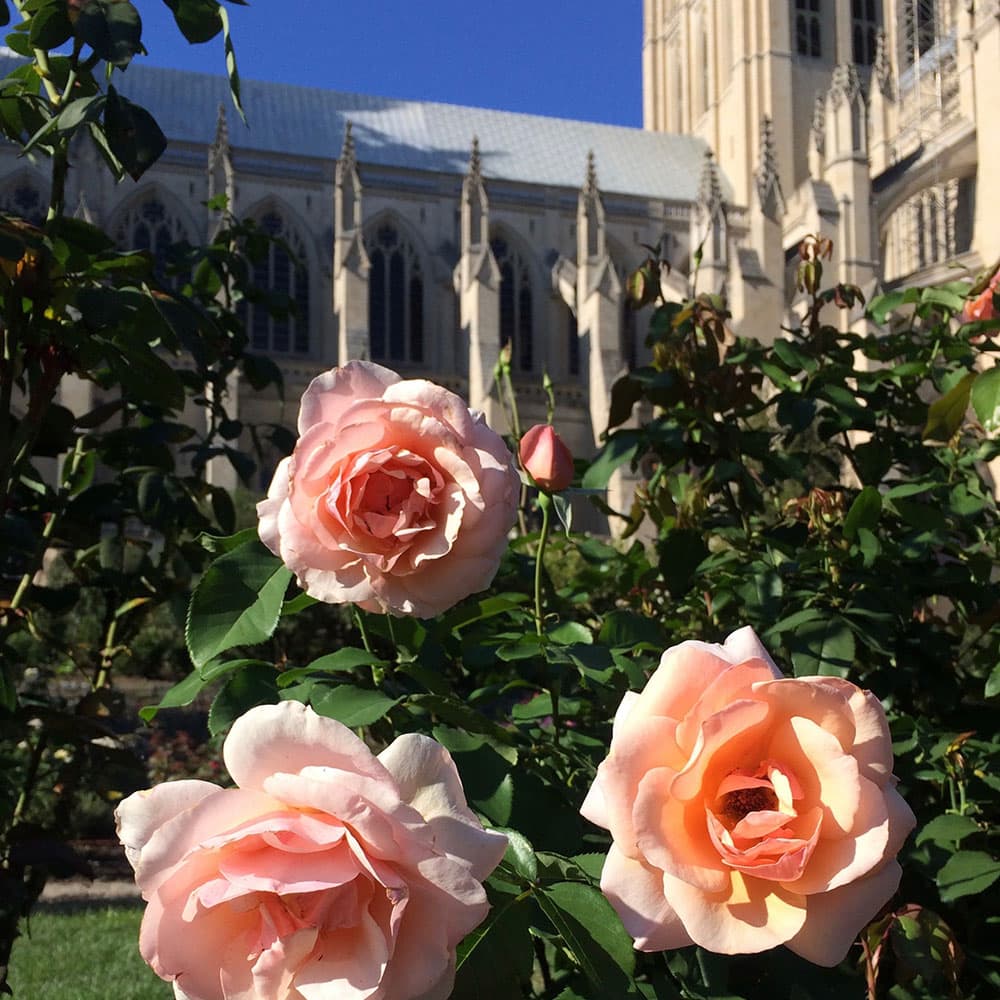
The rose garden is the only area that we use chemicals on a regular basis, and only in a limited amount. In the spring, we put down a chemical to prevent rose midge. However, our first choice in removing unwanted insects is by hand. An example of this is with the boxwood.
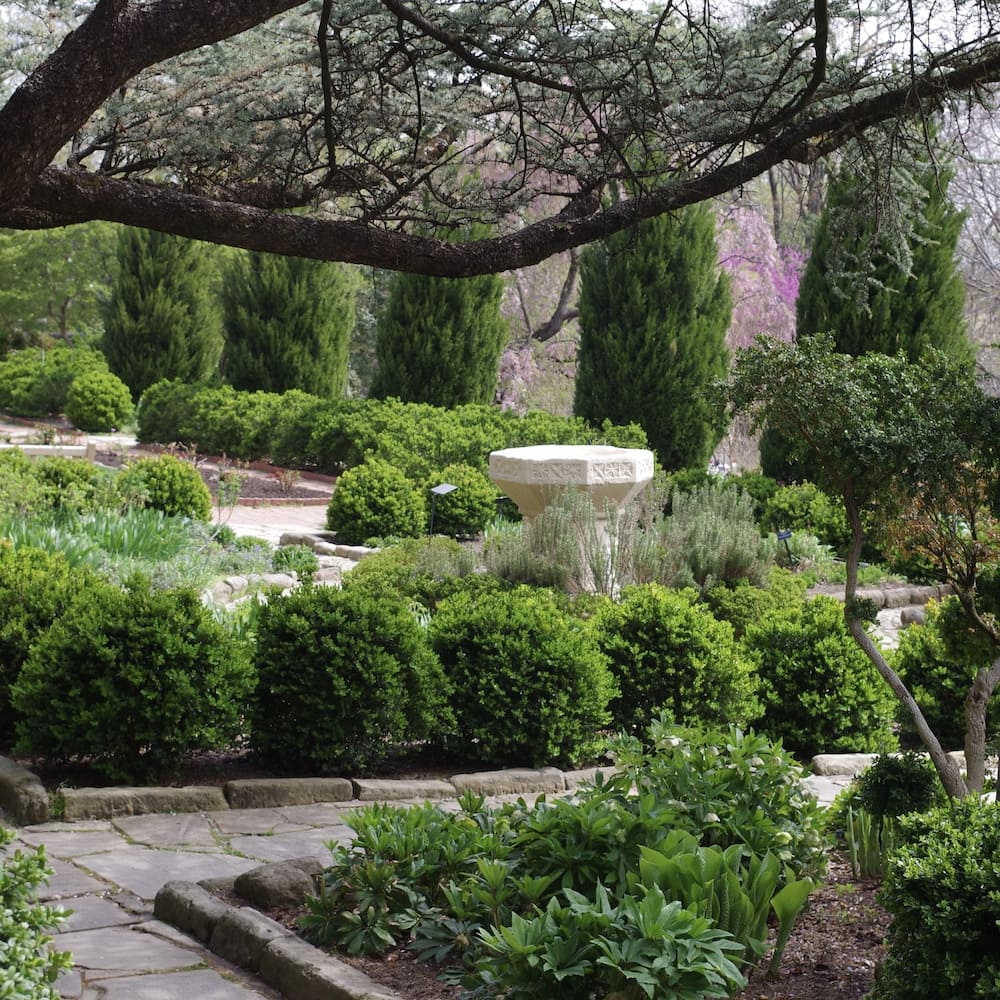
Our boxwood is susceptible to an insect called leaf miner. This bug overwinters in the new foliage on the plant. In the late winter, I will start pruning the boxwood to remove the foliage where the insects have attached. They hatch out of the leaves in the spring time, so I want to remove them before they leave the boxwood.
How do you prepare the garden for changes in season?
This depends on what season is approaching. This time of year, as we move into winter, we’re preparing the garden by removing leaves, planting flower bulbs, and digging out the annuals that have died. Perennials don’t get cut back until early spring. This allows the plant debris to act as an insulator for plants to overwinter. Then in the spring, we’ll remove last year’s plant debris and mulch the flower beds to be ready when the bulbs start to flower.
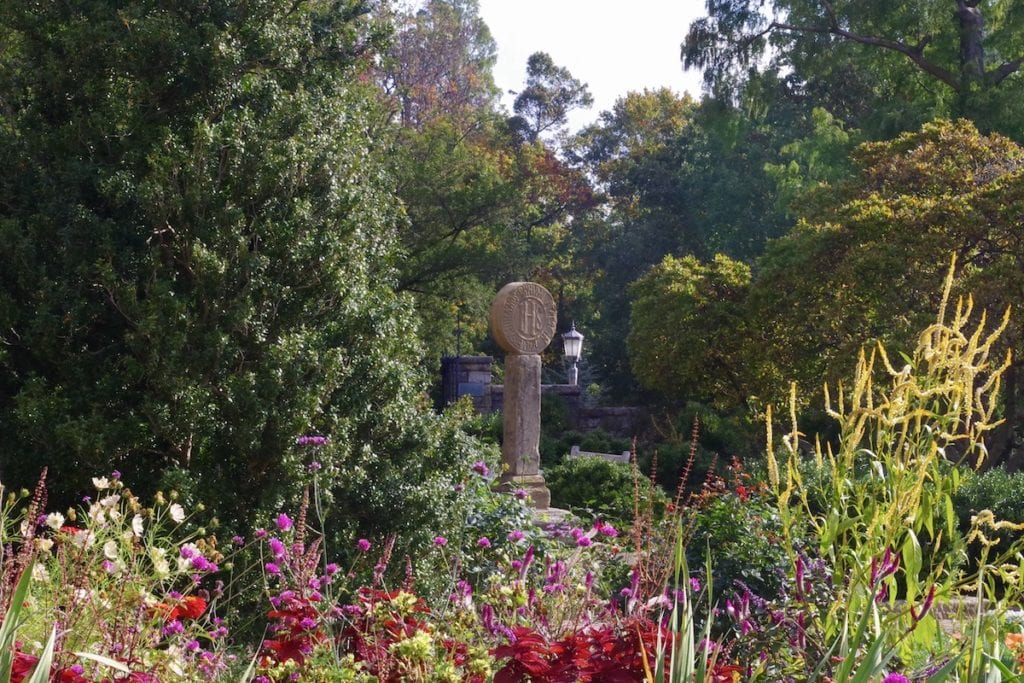
What types of equipment are used?
Tools used daily are our pruners and soil knife, used for weeding. Power equipment is kept to a minimum in the Bishop’s Garden, though we regularly use the backpack blower for clearing pathways and leaves. Otherwise, it’s pretty standard “gardening” tools; i.e., shovels, leaf rakes, hard rake, broom, and hoe.
The editors would add, none of the tools would be effective without a tremendous amount of dedication, knowledge, and lots of energy and muscle power. We in All Hallows Guild are so grateful to our horticulturists for their unstinting work and thoughtful care for our landscape. All of our garden areas have their own appeal and charm, but the Bishop’s Garden is the most noticeable and most talked about. Thank you, Addie Schopf, for helping to make it the jewel in the crown.



